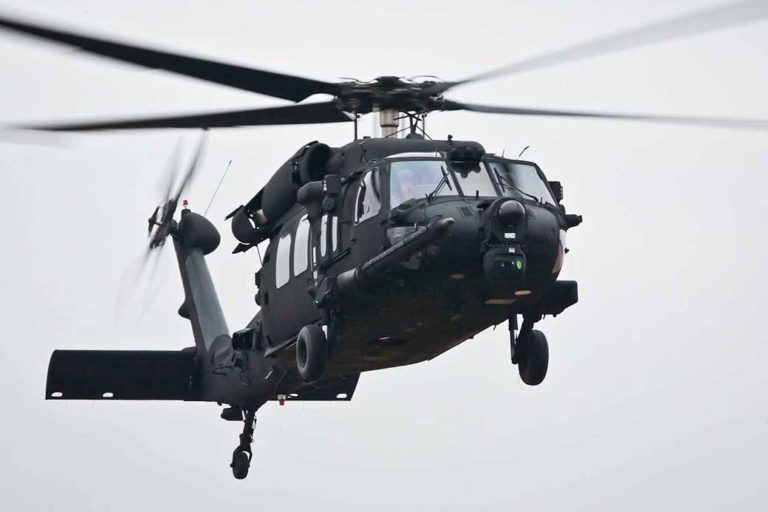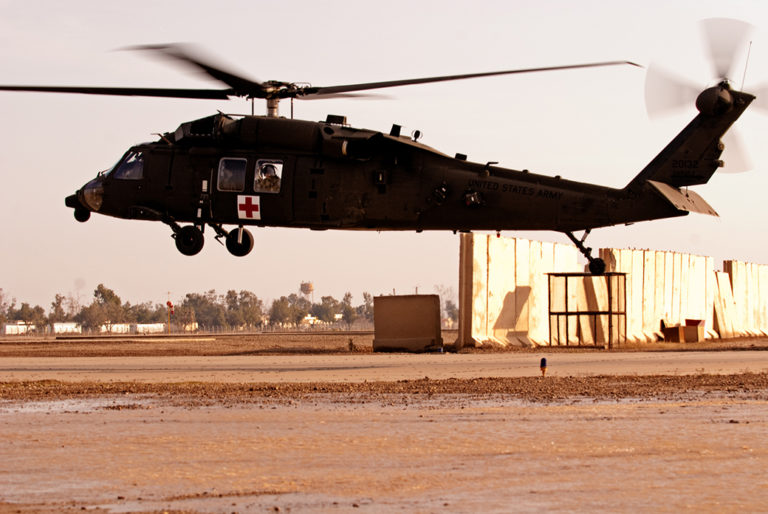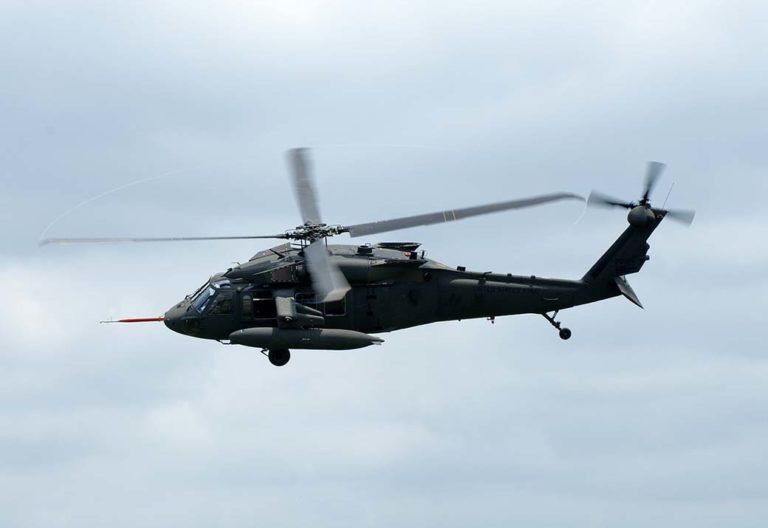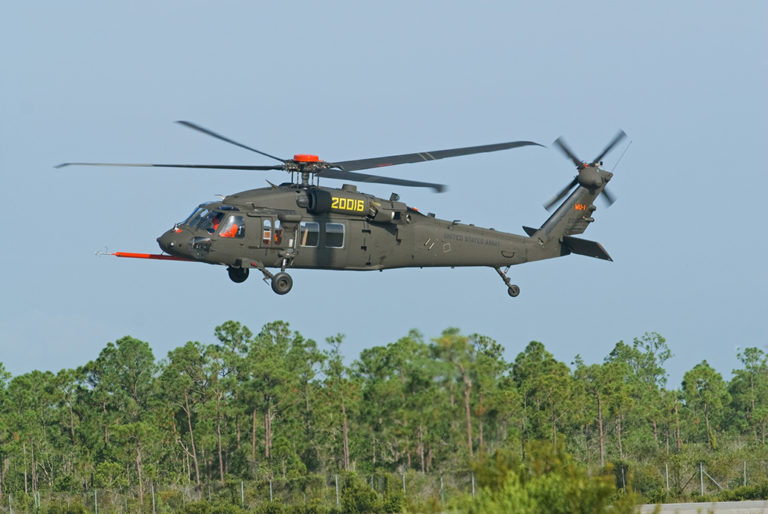Sikorsky Product History
Sikorsky S-70A: UH-60M Black Hawk Family
Background
The UH-60M Black Hawk looks much like the first S-70/UH-60A helicopter, but new structures and systems gave the UH-60 Mike-model more lift and range, improved flying qualities, enhanced readiness, and an integrated cockpit with digital connectivity. U.S. Army plans for incremental UH-60A/L recapitalization gave way to all-new UH-60M/HH-60M production in Stratford, Connecticut. The S-70M is built to the same standards in Mielec, Poland.
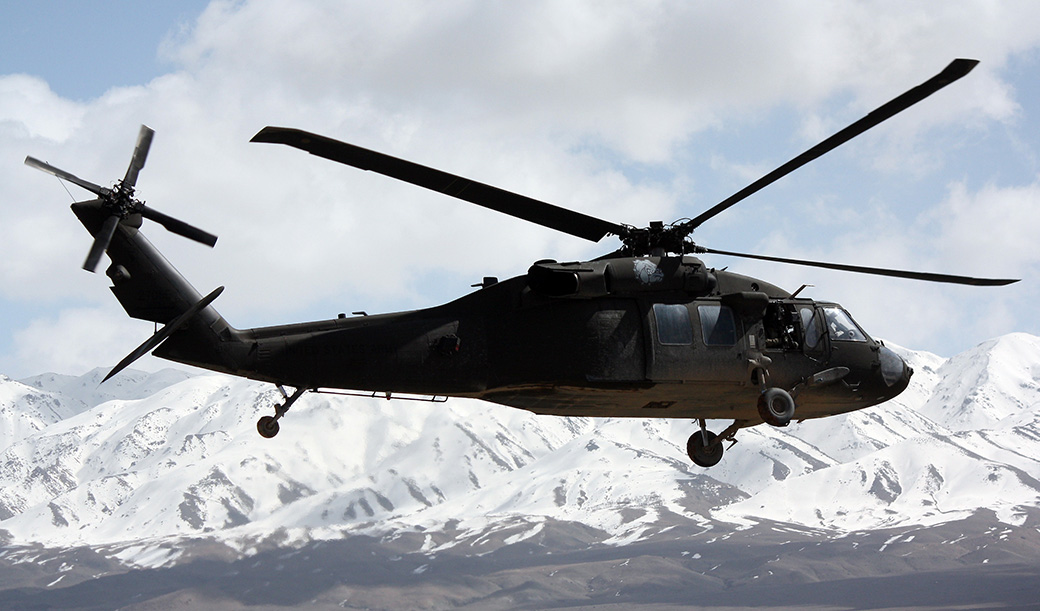
The original Utility Tactical Transport Aircraft System (UTTAS) specified by the U.S. Army in 1972 was a crashworthy, ballistically tolerant squad carrier with power to haul three crew and 11 troops at high density altitudes. In 1991, UH-60As and UH-60Ls flew troops, equipment, and supplies through Operation Desert Storm with mission capable rates better than 85%. However, a 1995 study by the Army Aviation and Missile Command documented shortcomings in the Black Hawk fleet.
Army lift requirements had increased with the addition of a fourth crewmember to provide all-round suppressive fire in “hot” landing zones and with heavier soldiers wearing new Air and Land Warrior equipment. External loads had grown to include 9,000 lb (4083 kg) air defense vehicles and other cargo that exceeded UTTAS requirements. Black Hawk operating costs had climbed as the UH-60A/L fleet aged. Early T700-GE-700 engines and the UH-60A transmission were key cost drivers. Desert Storm had also underscored the difficulty of navigating and communicating in a fast-moving war, often at night in the most adverse environments. The Army envisioned a digital battlefield where integrated cockpits managed data to mitigate crew workload and connect combined arms.
Timeline
Sikorsky began flying high-lift, wide-chord, all-composite main rotor blades on a UH-60L Black Hawk in December 1993 with an eye to growth versions of the Black Hawk. The planned UH-60M modernized the rugged UH-60L utility helicopter with wide-chord all-composite main rotor blades, 2,000 shp General Electric T700-GE-701D engines, a digital automatic flight control system, four-screen “glass” cockpit, and new machined aerostructures.
An Operational Requirements Document to recapitalize the UH-60A/L fleet to UH-60M standards was approved on March 5, 2001. Plans called for a mix of remanufactured and new-build UH-60Ms to restore Black Hawk performance at high density altitudes and reduce fleet operating and support costs. The Defense Acquisition Board approved an incremental plan to upgrade existing UH-60A/L helicopters, and Sikorsky received the UH-60M System Design and Development contact in May 2001. The contract ordered four prototypes: a UH-60A rebuilt to a UH-60M; a UH-60L modernized to the same standard; a new UH-60M built from scratch; and a UH-60A remanufactured as a Medevac HH-60M. Two UH-60As (one of them the third production BLACK HAWK) and a UH-60L went first to the Sikorsky facility in Troy, Alabama for teardown and inspection before remanufacture in Stratford.
Sikorsky test pilots Kevin Bredenbeck and Chris Geanacopoulos crewed the first UH-60M on its maiden flight at the Sikorsky Development Test Center outside West Palm Beach, Florida on September 17, 2003. UH-60M No. 1, originally a UH-60A, served as the performance and handling test vehicle. UH-60M No. 2, rebuilt from a UH-60L, was the Mike-model avionics test aircraft. A Combined Test Team from Sikorsky and the Army ultimately flew more than 850 Integration and Qualification hours in eight helicopters before the first UH-60M production delivery.
The Army initially planned UH-60M recapitalization in two blocks. Block 1 had two steps. A recapitalization/rebuild step at Corpus Christi Army Depot would have given UH-60As a strengthened tail structure like that of the UH-60L before second-stage recap/upgrade at Stratford rebuilt UH-60A and -60L helicopters with new blades, and machined aerostructures plus refurbished dynamics. The four-screen “glass cockpit” built on experience with Black Hawks integrated for international customers. UH-60M Block 1 soon became the UH-60M Baseline configuration. The UH-60M Block 2 Upgrade, later called UH-60MU, UH-60X, or the Future Utility Rotorcraft envisioned fly-by-wire flight controls, more powerful engines with full-authority digital engine controls, the Common Avionics Architecture System (CAAS) developed for Special Operations Aircraft, and a lighter composite tailcone to increase external hot-and-high payload to 10,000 lb (4536 kg).
Sikorsky estimated the cost of a remanufactured UH-60M Baseline helicopter at around 70% that of a new-build aircraft. Army remanufacturing plans gave way to more cost-efficient new-production UH-60Ms and HH-60Ms with all-new dynamics and aerostructures. Sikorsky presented Army leadership with the first production UH-60M Baseline helicopter on August 3, 2006. The new Black Hawk went to war in Iraq in 2008. HH-60M deliveries to Army Air Ambulance Companies began in 2008, and the new Dust-Off helicopter went to Iraq in 2010. The UH-60M and HH-60M standardized the T700-GE-701D engine common to the Army Apache helicopter. U.S. Special Operations Command received the first of 72 new-build MH-60Ms with 2,600 shp (1,940 kW) YT706 engines and the Common Avionics Architecture System in 2009 and fielded the first MH-60M company in November 2011.

Sikorsky Aircraft acquired PZL Mielec in 2007. Sikorsky Mielec delivered its first S-70i with UH-60M structures, systems, and performance in 2011 to the Kingdom of Saudi Arabia Ministry of Interior. The S-70i built in Poland for military and civil operators is now civil-certified as the S-70M and provides the basis of the Sikorsky Fire Hawk with high-rise landing gear and an external water tank with snorkel.
The UH-60M Upgrade with fly-by-wire flight controls and Common Avionics Architecture System (CAAS) flew for the first time on August 29, 2008 at West Palm with Sikorsky pilots Mike Skaggs and Steve Silder. Four test aircraft were used to qualify the fly-by-wire systems before the UH-60MU program was shelved and production standardized on the Baseline configuration. Independent of the UH-60M program, the Army plans to recapitalize UH-60L BLACK HAWK helicopters to UH-60V standards with UH-60M cockpit functionality.
Configuration Features
Like the predecessor S-70A/UH-60L, the UH-60M is a twin turboshaft, single main rotor helicopter capable of transporting 11 combat troops, cargo, and weapons by day or night, in Visual Meteorological Conditions Instrument Meteorological Conditions (IMC), (VMC), Instrument Flight Rules (IFR), Visual Flight Rules (VFR), and Degraded Visual Environment (DVE) conditions. The UH-60M retains the 3,400 hp improved durability gearbox and heavy-duty flight controls of the UH-60L but incorporates a Seahawk rotor brake for shipboard operations. The 1,994 shp General Electric T700-GE-701D engines of the UH-60M provide around 4% more power than the predecessor -701C and have improved durability components for longer engine life and lower operating costs. The latest Black Hawk with wide-chord main rotor blades and General Electric T700-GE-701D turboshafts can hover at 23,500 lb (10,700 kg) with external loads. The 3,000 shp General Electric T901 Improved Turbine Engine is scheduled to enter the U.S. Army Black Hawk fleet in Fiscal 2027.
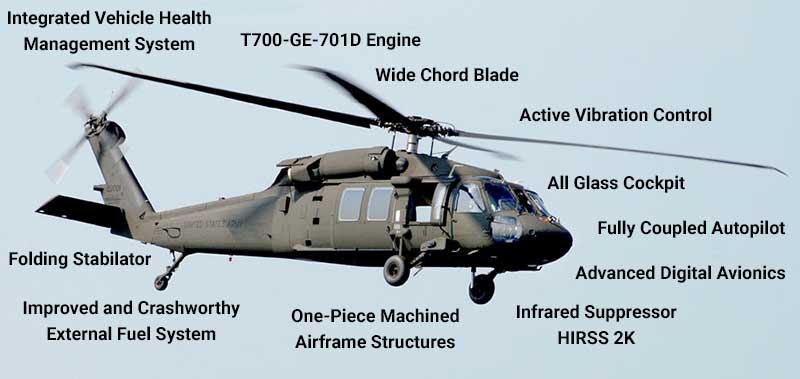
The UH-60M has four high-lift composite main rotor blades with 1.74 in. (4 cm) greater chord than the original composite/titanium blades of the Black Hawk. Swept anhedral tips to enhance performance at high gross weights and high density altitudes. The new rotor and engines increase useful load more than 1,000 lb (450 kg). The high-lift main rotor provides a dramatic payload-range improvement over the original Black Hawk with better handling properties. Except for the wide chord main rotor blades, all UH-60M dynamic components, including the tail rotor, are the same as on those the UH-60L. To further improve its handling characteristics UH-60M also has an active vibration absorber and dual digital flight control computers. The more reliable new computer integrates the stabilator and stability augmentation system amplifier to provide a coupled collective function.
Beneath the new main rotor are a series of airframe changes adopted to reduce part count, prevent cracking, and eliminate corrosion points. Strengthened transmission support beams an upper deck structure introduced on the U.S. Navy MH-60S Knighthawk made it more cost-effective to replace rather than rebuild the Black Hawk cabin. All UH-60Ms emerge from the factory with provisions for the External Stores Support System (ESSS) to carry up to four 230 gal (871 L) fuel tanks. A Crashworthy External Fuel System has been developed for the ESSS. The Mike Model airframe also incorporates an aft transition access door and avionics compartment,

The UH-60M avionics suite was integrated on MIL-STD-1553, ARINC 429 data bus, and Ethernet buses to manage crew workload and improve the capability and reliability of the Black Hawk. The cockpit has four multi-function displays to present aircraft systems, communications, and navigation data including a digital map. Dual digital flight control computers provide Stability Augmentation System (SAS), trim, and Flight Path Stabilization. The UH-60M replaced the early Doppler navigation system of the Black Hawk with dual precision Embedded GPS/Inertial (EGI) navigator, and software-defined radios. An Improved Data Modem and Blue Force Tracker connect the helicopter crew with other air and ground units.
To counter today’s more lethal infrared threats, the latest UH-60M will wear new upturned infrared exhaust suppressors, laser and radar warning receivers, infrared jammers, and flare dispensers. A Common Infrared Countermeasures System is in production for the U.S. Army. A third-generation Integrated Vehicle Health Management System with Ethernet interface and integrated bearing monitor and cockpit recorder functions flew on the third UH-60M prototype and became part of the Mike-Model production configuration. Subsequent avionics improvements make the current Black Hawk compatible with civil airspace regulations.
General Characteristics and Performance
| Weights | UH-60A | UH-60L | UH-60M |
|---|---|---|---|
| Useful Load | 5,710 lbs. | 5,924 lbs. | 6,882 lbs. |
| Empty weight | 11,284 lbs. | 11,782 lbs. | 12,500 lbs. |
| Mission weight | 16,994 lbs. | 17,706 lbs. | 19,382 lbs. |
| Max gross weight | 20,250 lbs. | 22,000 lbs. | 22,000 lbs. |
| Performance | UH-60A | UH-60L | UH-60M |
|---|---|---|---|
| Cruise speed at GW of 16,800lbs. | 140 knots | 155 knots | 153 knots |
| VROC at GW of 16,800 lbs. | 377 ft./min | 1,315 ft./min | 1,646 ft./min |
| VROC at GW of 18,000 lbs. | Zero ft./min | 592 ft./min | 994 ft./min |
Production History
The first production UH-60M was delivered to the Army on July 31, 2006 as production of the UH-60L stared to taper off. By the end of 2020, the Stratford line had delivered 831 UH-60M utility helicopters and 281 HH-60M medical evacuation aircraft to the US Army. The 10th H-60 multi-year production contract extends through 2028 to complete the U.S. Army objective for 884 UH-60M utility, 419 HH-60M Medevac, and 72 MH-60M Special Operations Black Hawks.
Additional Information Sources
Additional program background and technical information can be found in the book entitled “Black Hawk, the Story of a World Class Helicopter” published by the American Institute of Aeronautic and Astronautics in 2007 and written by Ray D. Leoni. ISBN-13:987-1-56347-918-2.
- by Frank Colucci
Related Articles

Bill Paul: Reflections on Sikorsky’s 100th Anniversary
Former Sikorsky President Bill Paul reflects on his career with Sikorsky, meeting Igor Sikorsky, and the Sikorsky Aircraft Company’s 100th anniversary.
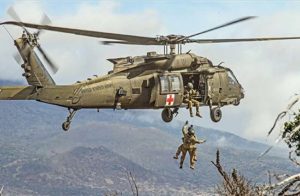
Sikorsky Lifts the Army
The U.S. Army saw the possibilities of the helicopter early in its development, thus beginning a relationship with Sikorsky Aircraft that continues to this day.
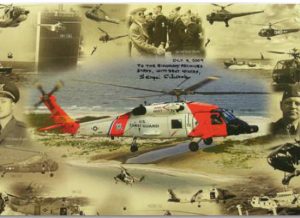
Sikorsky Serves the Coast Guard
A flight demonstration of Igor Sikorsky’s VS-300A helicopter at Bridgeport, Connecticut in April 1942 started an air-sea rescue revolution in the U.S. Coast Guard.
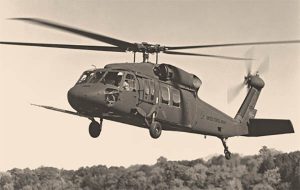
Bill Paul: Management Contributions to the Black Hawk Helicopter’s Success
Bill Paul recollects one of the key milestones of Sikorsky history, the win of the UTTAS program that became the Black Hawk helicopter.
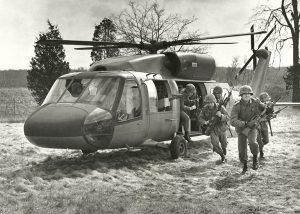
Ray Leoni: Recollections of a Sikorsky Junior Engineer
Ray Leoni recollects his 41-year career at Sikorsky Aircraft, beginning as a junior engineer and retiring as a Senior VP of Engineering and Advanced Programs.
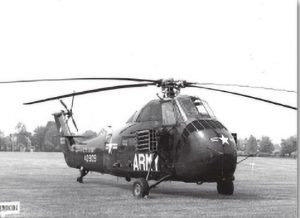
Evolution of the Armed Helicopter
Military users quickly understood the flexibility and fire-power of rotary wing platforms and ultimately evolved highly integrated weapons systems ready to protect themselves and others.
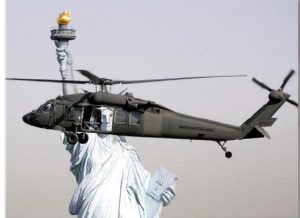
The Sikorsky Black Hawk in U.S. Military Service
When Black Hawk program manager Colonel Richard Kenyon received keys to Sikorsky’s first production UH-60A on October 31, 1978, the U.S. Army received the powerful, hardened assault helicopter it wanted.
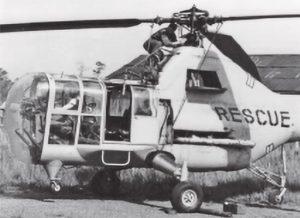
Sikorsky Helicopters in U.S. Air Force Rescue Squadrons
The HH-60W Combat Rescue Helicopter is the latest in the life-saving line of Sikorsky helicopters made for U.S. Air Force Rescue Squadrons. The Whiskey will round out a century of vertical flight rescue heroism.
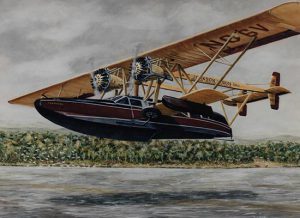
Sikorsky Aircraft Color Schemes
This issue of the newsletter illustrates some of the artistic variations in the exterior color schemes of aircraft delivered during Igor Sikorsky’s three careers.
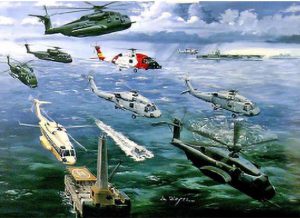
Sikorsky Aircraft Paintings by Andy Whyte
This issue of the newsletter is devoted to the aircraft designs and paintings by Andy Whyte, who had a 40 year career at Sikorsky Aircraft.

U.S. Coast Guard and Sikorsky Celebrate Significant Events
The United States Coast Guard and Sikorsky Aircraft celebrated two significant events in 2016. One century of United States Coast Guard aviation and the 127th birthday of Igor Sikorsky.
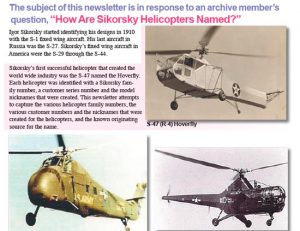
How Sikorsky Helicopters Are Named
The subject of this newsletter is in response to an archive member’s question, “How Are Sikorsky Helicopters Named?”

